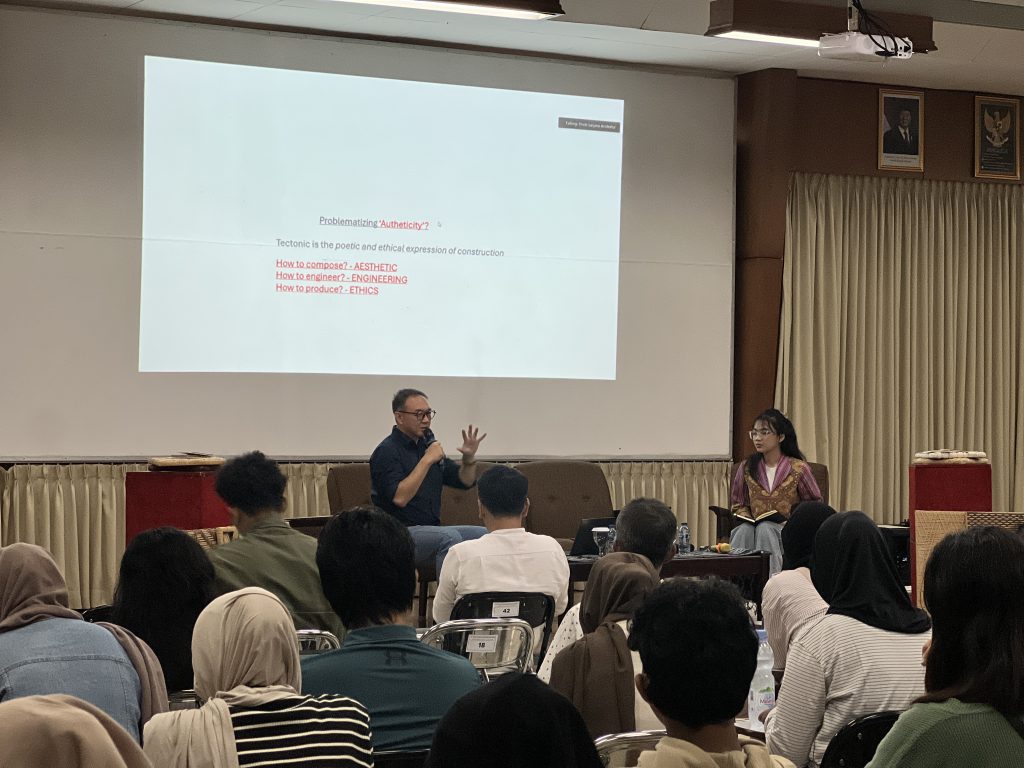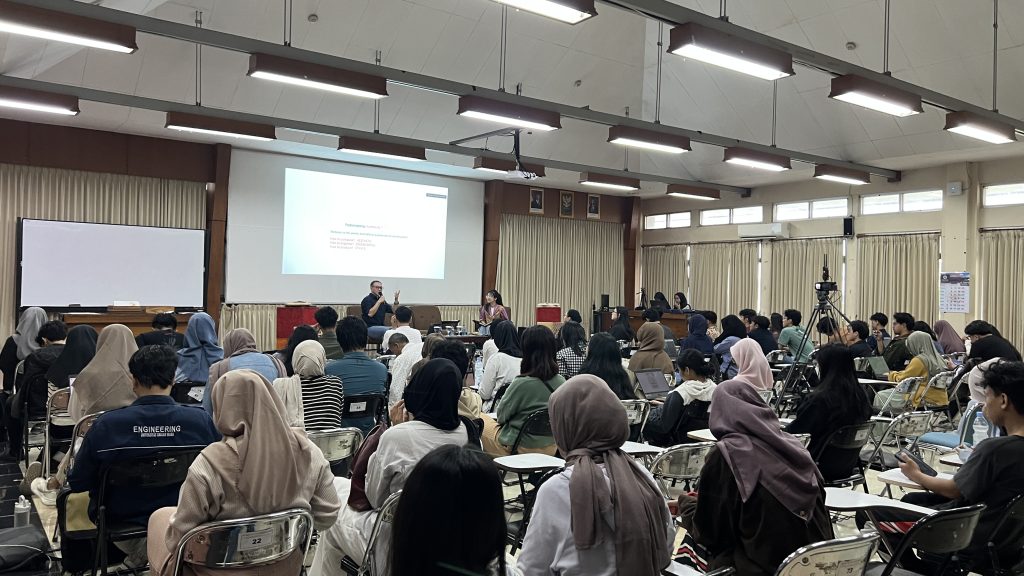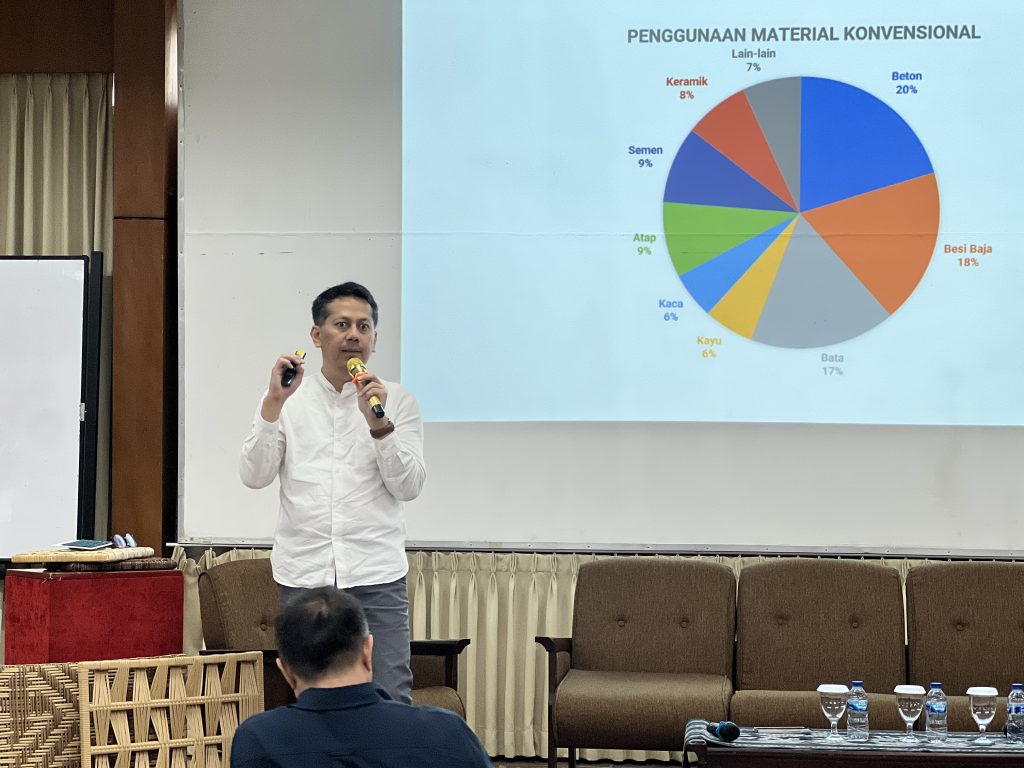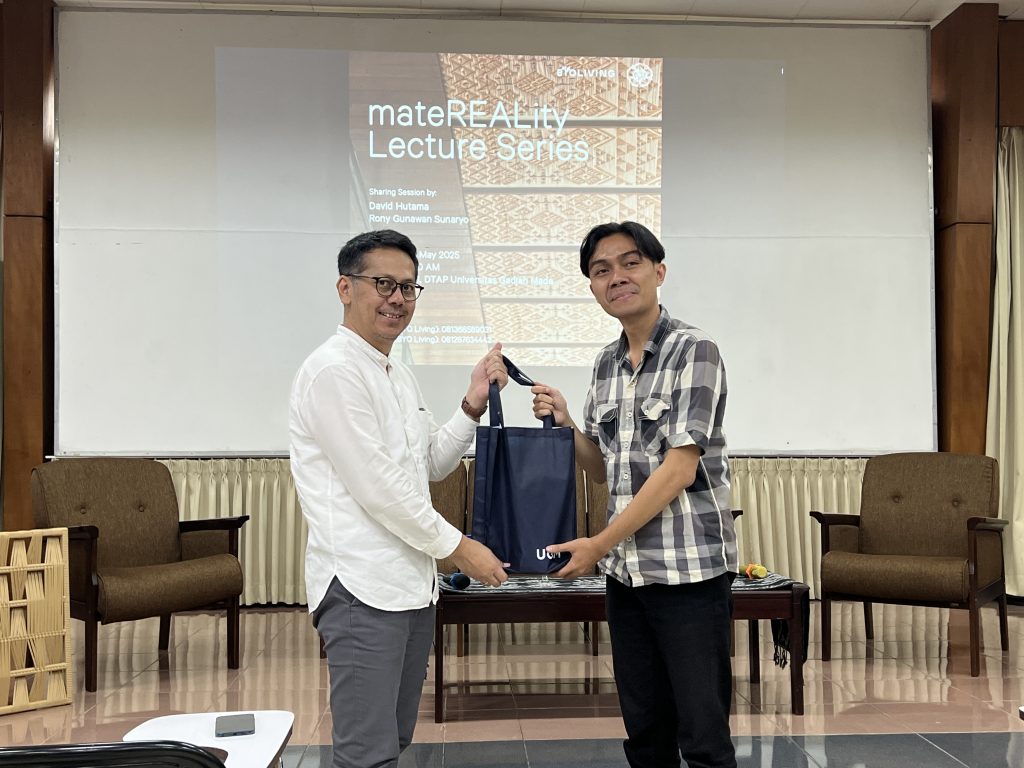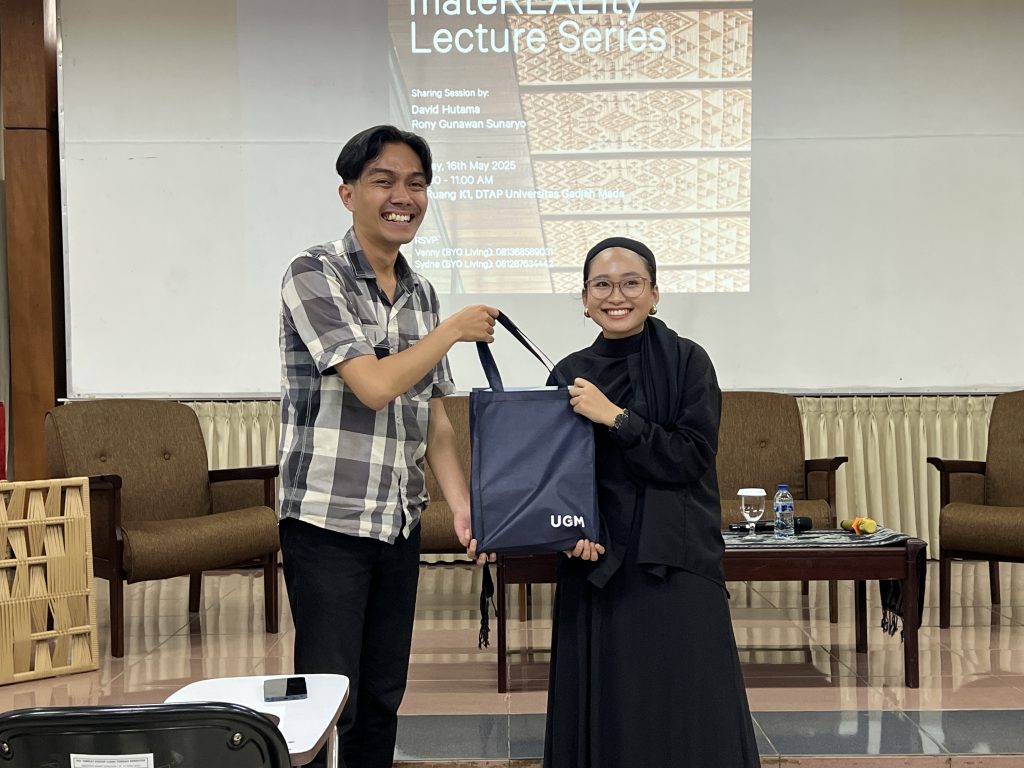
Weaving is one of the most common architectural elements that has been used for centuries in Indonesia. Typically made from bamboo and known as gedhek in Javanese, weaving has traditionally served as walls or partitions in vernacular houses. Today, weaving is no longer limited to traditional homes—it can also be applied in various building typologies such as cafes, hotels, airports, and more. With innovations in materials, weaving can now be adapted to suit specific aesthetics or functions desired in architectural design. BYO Living, a renowned weaving studio from Indonesia, shared their insights on weaving in the MateREALity class (Materiality in Architecture), joined by two practitioners: David Hutama (Nenun Ruang) and Rony Gunawan Sunaryo (rgA studio), on Friday, May 16, 2025, at Room K1, Department of Architecture and Planning, Faculty of Engineering, Universitas Gadjah Mada. The discussion was led by Mutiara Angel Simanjuntak, an undergraduate student of the Architecture Program, class of 2023, who served as the moderator.
The event began with a presentation by David Hutama titled “Tectonic of Weaving”, which discussed the tectonics of weaving and its timeless nature. From the past to the present, woven materials have been used by communities through relatively unchanged methods. As a building material, weaving possesses a unique characteristic—it requires at least two components in its making to form the woven pattern. Today, this traditional material can also be developed through computational methods, such as optimizing the performance of woven partitions by studying their effectiveness in blocking sunlight. These partitions can be digitally simulated to display the most aesthetically pleasing patterns. As such, a woven partition not only serves an aesthetic function but also becomes highly functional and capable of performing optimally as a building element.
The session continued with a presentation by Rony Gunawan Sunaryo, who shared his academic research on architectural education in Indonesia, particularly regarding the proportion of graduates who become practitioners. In his talk, he encouraged the continuous enhancement of architectural culture within the educational environment.
Sydnelisa Mumtazah, representing BYO Living as the Business Development Coordinator, then shared BYO Living’s various experiences in continuously innovating the form and materials of weaving. Beyond bamboo, weaving today can be made from synthetic materials that are weather-resistant, or even recycled materials such as used airport conveyor belts. The forms of weaving are now diverse and can be applied to architectural elements such as railings, façades, ceilings, and even non-architectural elements like art installations. BYO Living’s projects are not limited to Indonesia—they have reached other continents, proving that weaving, typically seen as a traditional and conventional craft, can be transformed into contemporary art. These developments reflect the relevance of sustainable design principles and align with several Sustainable Development Goals, particularly those concerning sustainable cities and communities (SDG 11), responsible consumption and production (SDG 12), climate action (SDG 13), and the promotion of industry, innovation, and resilient infrastructure (SDG 9).
Reported by Nisrina Amalia Paramanindya.

